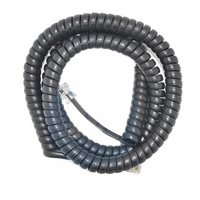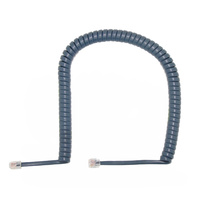Curly Cords for Voice Products
Explore our wide range of curly cords designed to enhance the flexibility and convenience of your telephone communication. These coiled cords are perfect replacements for damaged or worn-out cords and are compatible with various telephone models. Discover the versatile world of Curly Cords at Telrex formally known as Telephone Wreckers. Designed for a myriad of applications, these cords offer the flexibility you need without compromising on performance. Upgrade your telephone communication today with Telrex curly cords.
Understanding Curly Cords
Curly Cords, often referred to as coil cords or retractile cords, are specially designed cables that can stretch and retract to their original shape. Their unique design makes them ideal for spaces where excess cable length might be a hindrance.
Why Curly Cords?
Curly Cords are not just about aesthetics; they offer practical benefits. Their coiled design ensures that they take up minimal space, reducing the risk of tripping hazards. Moreover, their ability to extend provides flexibility in various applications, from telephones to medical devices.
Features and Benefits:
- High Flexibility: Curly Cords can stretch and return to their original form, making them perfect for dynamic environments.
- Durable Design: Made from quality materials, our curly cords are designed to withstand the wear and tear of daily use.
- Versatile Applications: From telephones to handheld medical devices, curly cords find use in a myriad of applications.
- Safety: The retracting nature of curly cords ensures a clutter-free environment, reducing potential tripping hazards.
FAQs:
What is the curly phone cord called?
It's commonly referred to as a curly cord, but can also be known as a coil cord or retractile cord.
Why are some cords curly?
Curly cords are designed to be space-saving and flexible. Their coiled design allows them to extend when needed and retract to avoid excess cable length.
How do you make a curly cord?
Curly cords are made by wrapping straight cables around a mandrel and then heating them to set the coiled shape.





